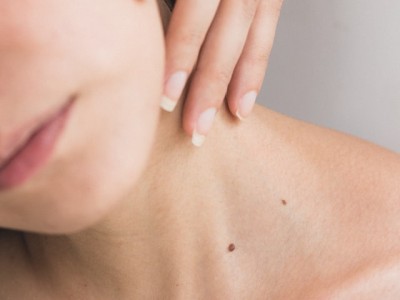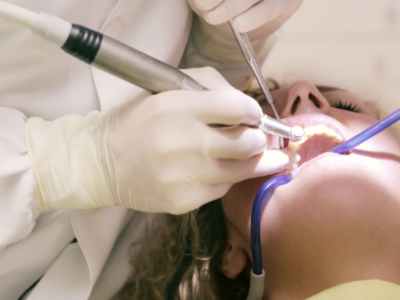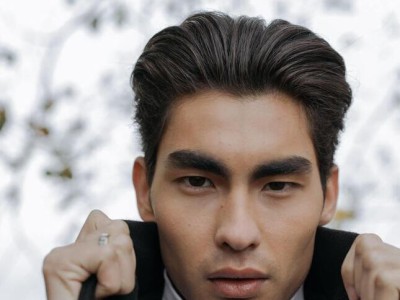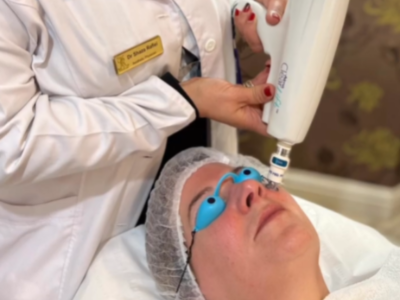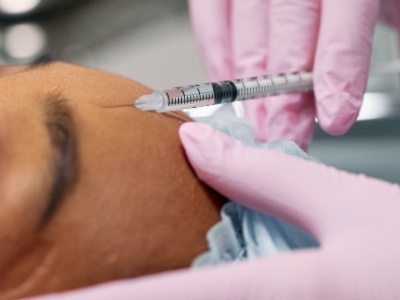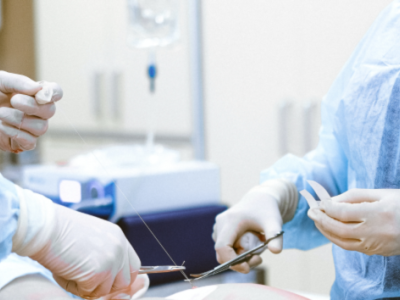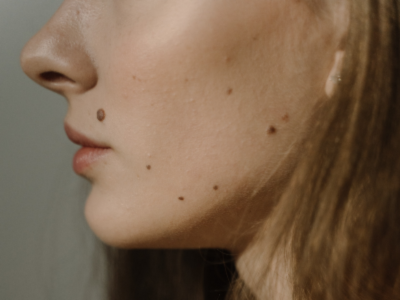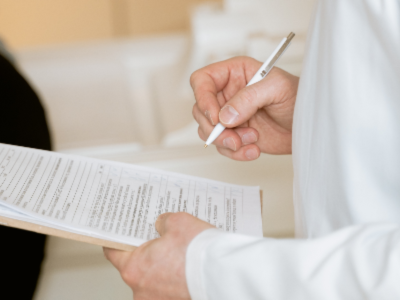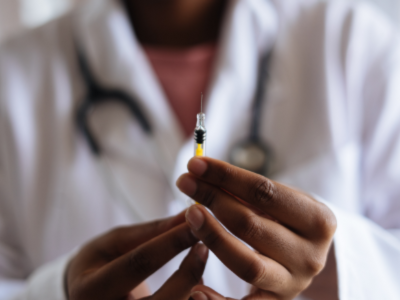Hair Transplants in Southend-on-Sea, Essex at JR Medical
 Hair Transplant
Hair Transplant
Hair transplantation is based on the principle that hairs moved from one part of the body and implanted in another part of the body will grow for as long as they would have grown in their donor location.
What is Hair Transplantation?
The procedure is usually carried out under local anaesthetic with or without sedation and therefore, it is hardly painful. The procedure is divided into two phases:
-
extracting the donor hairs (usually from the back and/or sides of the head)
-
designing the recipient area and implanting the grafts.
Extracting the donor's hairs
There are two commonly used methods of extracting donor's hairs:
- The follicular unit excision (FUE) technique entails using a punch tool or a punching machine to remove follicular units (resulting in small round scars). This can be done manually, using automated punches or by a robot.
- The strip method which is less common, entails removing a section of hair-bearing scalp (resulting in a linear scar) and dissecting it under magnification into follicular units ready for implantation.
There are advantages and disadvantages of both methods and some individuals are more suited to one or the other.
Designing the recipient area and implanting grafts
There are a wide variety of instruments used to make recipient sites and implant the grafts but angle, orientation, density and hairline design are key elements required to achieve a natural aesthetic result.
At your consultation with JR Medical, the area to be grafted will be discussed and agreed upon with you and the recipient: donor ratio is determined.
Please bear in mind that as there are a finite number of hairs available in the scalp donor area, if the recipient area is very large then the area covered or the density that can be achieved might need to be compromised.
Additional procedures can be carried out later on to increase density however planning for the possibility of further hair loss should be taken into account.
Transplanted hairs usually take 3 – 4 months to start to grow and it may be a further 6 – 9 months depending on the individual’s hairstyle and length of hair to be able to assess the aesthetic result of the procedure. The transplanted hairs may continue to improve in quality for up to 18 months post-procedure.
Who Can Benefit from a Hair Transplant?
There are many causes of hair loss (alopecia) and these are commonly classified as patterned or non-patterned alopecia with the latter subdivided into scarring and non-scarring alopecias. Trauma, surgery and burns result in scarring alopecia which can sometimes be very effectively treated with a hair transplant. Some dermatological conditions also result in scarring alopecia and can be treated with a hair transplant, if the condition is fully resolved. Some types of non-scarring alopecias can be transplanted but most hair transplant surgeons would advise against transplanting in the common condition alopecia areata. Male and female pattern hair loss are very common examples of patterned alopecia.
Male Pattern Hair Loss (MPHL)
Male Pattern Hair Loss is defined as hair loss at the front, top and/or the crown/vertex of the scalp (non-permanent area). The back and sides of the scalp are spared and usually grow hair for life (a permanent area or ‘safe’ donor zone). The hair root has a life cycle. In simple terms, this cycle consists of a growing phase and a resting phase. Before hair loss sets in, the growing phase lasts up to seven years and the resting phase lasts three to four months. Genetic hair loss causes the life cycle phases to go in reverse, i.e. the growing phase becomes shorter and shorter and the resting phase longer. Eventually, the hair grows very little or not at all. The cause of MPHL is the presence of hormone receptors in the hair roots of the non-permanent area. No such receptors exist in the permanent area. These receptors attract the male hormone dihydrotestosterone (DHT) which starts the hair-loss process. The number and location of these susceptible hairs are determined by inherited genetics from both or either parent.
Female Pattern Hair Loss (FPHL)
Normally, women shed an average of 100 hairs per day. Fortunately, these hairs are replaced. However when these lost hairs are not replaced, or when the daily shedding exceeds the normal, true hair loss occurs and can be very distressing.
The difficulty in dealing with hair loss in women is that a number of conditions result in the same diffuse pattern in which the hair over the top and crown of the head becomes thinner (occasionally, the temples will recede too). There is often some investigation needed to first isolate the true cause before deciding if a hair transplant is suitable.
Our team of medical experts or our hair loss specialist will take a detailed medical, drug and family history and some basic blood tests are usually recommended such as a full blood count, glucose, serum ferritin (iron stores), thyroid hormones and, where relevant, gestational hormone levels. We might be also doing an internal referral to our in-house dermatologist (skin specialist doctor) or our trichologist (non-medical hair & scalp specialist) if we feel further investigation of the health of the scalp and hair is required.
Female pattern hair loss is the most common type of hair loss seen in women and is an inherited condition. Just as men acquire the susceptibility to hair loss from one or both parents, so too can women. This determines the location and the number of hairs that are lost or thinning. The hair loss is triggered by androgens (male hormones) therefore it may occur at any time from puberty but is most commonly seen after menopause. All women have a small number of male hormones and the ratio of male: to female hormones can increase if levels of female hormones decrease, as occurs during menopause. We also have an expert team of medical practitioners in-house who could assist by assessing your sex and thyroid hormones via blood tests, prescribing these for you as and when required.
Hair transplantation could be of benefit with this condition but some women are more suited to surgical treatment than others, and some are not suitable candidates at all.
How to Prepare Yourself for Hair Transplant
Hair transplantation is not a joke! It is a procedure that requires serious consideration and research before you decide to commit. Like every other cosmetic procedure, sadly this procedure has become widely available all across the world and the price has become really competitive with no justification on the qualification and credential of the surgeon, experience of the technician, set up of the hair transplant theatre and team, credibility of the clinic and the most importantly follow up arrangements. It has been seen widely that when a patient travels abroad for cosmetic procedures, there are no aftercare services on hand. Complications are accidents and by having procedures in your home country, you will dramatically decrease the chance of mismanaged complications.
At JR Medical Polyclinic, you go through different stages of assessment and consultation with doctors, consultants and team members and you even might find that you are not the right candidate for the procedure.
If you are past the “should I get a hair transplant” question and planning your surgery, then, there are certain things you need to consider.
1 Month Before the Surgery
About a month before the surgery is the time to make sure your scalp is as healthy as possible in preparation for your hair transplant. If you can help try to begin by massaging your scalp gently for 10 to 30 minutes every day. This way, you will balance your blood flow and prepare your scalp for surgery. We also have a variety of packages of which we may recommend different treatments, ie, mesotherapy or carboxytherapy to prepare your scalp for better results.
2 Weeks Before the Surgery
As the days before your treatment approach, there are a few things you should start doing to promote a good recovery process.
- Consult your doctor and adhere to their advice.
- Stop consuming alcohol.
- Avoid smoking.
- Stop cutting your hair.
Here are other things you should do or do not do before the surgery:
Do’s
- Wash your hair before the surgery with the recommended shampoo.
- Wear comfortable clothes that will not require you to pull them over your head.
- Eat a light breakfast before the procedure.
- If you have a fever or shortness of breath, tell your surgeon before the surgery.
- Stay away from any exercises from a week before the surgery.
Don’ts
- Don’t drink alcohol.
- Don’t dye your hair prior to surgery.
- Don’t take any supplements without your doctor's knowledge.
- Don’t drink energy drinks at least 3 days before the operation.
- Don’t smoke at all at least 3 days before the surgery.
- Don’t take any medications before the surgery unless your doctor says it is okay.
- Don’t eat greasy and fatty foods at least 10 days before the operation.
It is perfectly normal to be anxious before any kind of surgery as well as hair transplant surgery. The specialist team will make sure to address your worries and take very good care of you. You will be informed at every step of the procedure by the medical staff to make sure you are as comfortable as possible. Hair transplants are important life decisions, and you need to be careful with what you do before and after the procedure. Our surgeons will provide you with the necessary information and give you helpful advice to make sure you get the best results from the hair transplant.
More information on Hair Transplant Procedure
The donor area is typically the area at the back and sides of the head where a hair transplant surgeon harvests follicles. This procedure happens by extracting hair follicles from the donor area one by one (FUE Hair Transplant) surgery and relocating them to a balding or thinning area. Hair follicles extracted from a donor area are typically resistant to the balding process. When they are moved to a balding or thinning area, they continue their resistance and grow normally. This hair will continue to grow with the same principle as it grows in the harvest area.
How long does the donor area need to recover after a hair transplant?
After the hair transplant operation, the donor area could be bandaged depending on the size and extent of the harvesting area. The bandage needs to stay on for 3 days. Typically and in normal circumstances on the 10th day after the surgery, the wounds begin to heal. Hair transplant donor area recovery, therefore, could be said to start after the surgery. So, the answer to the question “How long does a hair transplant take to heal?” is also the same: It begins right after the surgery and depends on the person and the haircare.
Are the scars in the donor area after a hair transplant noticeable?
The donor region seems scanty after a hair transplant. However, when viewed from the outside, this scantiness is barely noticeable. If the person undergoes the FUT hair transplant, a substantial scar remains in the donor area since the skin is removed. It also takes a long time for this area to recover completely. However, in the FUE method, very tiny scars that are unlikely to be noticed occur.
Is it possible to leave no scars in the donor area after a hair transplant?
Incisions of 0.7-0.9 millimetres are done around the hair follicles. In other words, no matter what method is utilized in hair transplantation, the process cannot be performed without leaving a scar. The key is to use a strategy that leaves as little as possible behind. The FUE method leaves fewer and tinier scars than the FUT method. The scars, moreover, heal in a short period of time.
How can the scars in the donor area after a hair transplant be concealed?
After a hair transplant, hair that grows towards the hairline might cover small scars on the scalp. Because it will be wrapped during the first week, the nape area won't be an issue. Once the bandage is removed from the donor location, you can experience some itching for a short while. To prevent lasting scarring on your scalp, it is best to avoid scratching this area as much as possible.
Additionally, it will be advantageous to use specific lotions or moisturisers suggested by your doctor to reduce itching and hasten the healing process. You can apply a cold compress to the donor area if your doctor approves of it. In order to determine whether you get folliculitis following a hair transplant, it's best to make sure you attend your scheduled checkups after the procedure.
Alternatives to hair transplant surgery
Not everyone is suitable for a hair transplant procedure or wishes to undergo surgery. There are a wide range of treatments available which would be discussed with you at the time of your preliminary consultation with the head of the cosmetic team.
These treatments could range from Mesotherapy, Carboxy Therapy and some prescriptive and non-prescriptive topical treatments. There could be oral medications approved for hair loss which can be discussed with our consultant team or hair loss specialist.
Camouflage procedures are also available if nothing else can work as they can mimic the appearance of thicker hair.
Low-level light might be of benefit in increasing hair growth and hair calibre. General health and environmental factors can also influence hair growth. Shampoos and conditioners may improve the quality and health of the hair but will not increase the number of hairs.
Micropigmentation tattooing has been utilised to produce the appearance of hairs either as stubble or strands whilst hair replacement systems, hair pieces and wigs can give the illusion of a full head of hair.
One way or another at JR Medical Hair Centre we can assist you with your Hair Journey.
JR Medical is a clinic based in Southend-on-Sea, offering hair transplants in Essex, with over 25 years of professional experience in the cosmetic industry. All hair transplants are administered by an experienced professional.
Call JR Medical now on 01702 314497
All of our services cover the whole of Southend-on-Sea including Westcliff-on-sea, Leigh-on-Sea, Rochford, Hadleigh and Benfleet. We also cover a wider area of Essex, including Rayleigh, Basildon, Grays and Thurrock.






